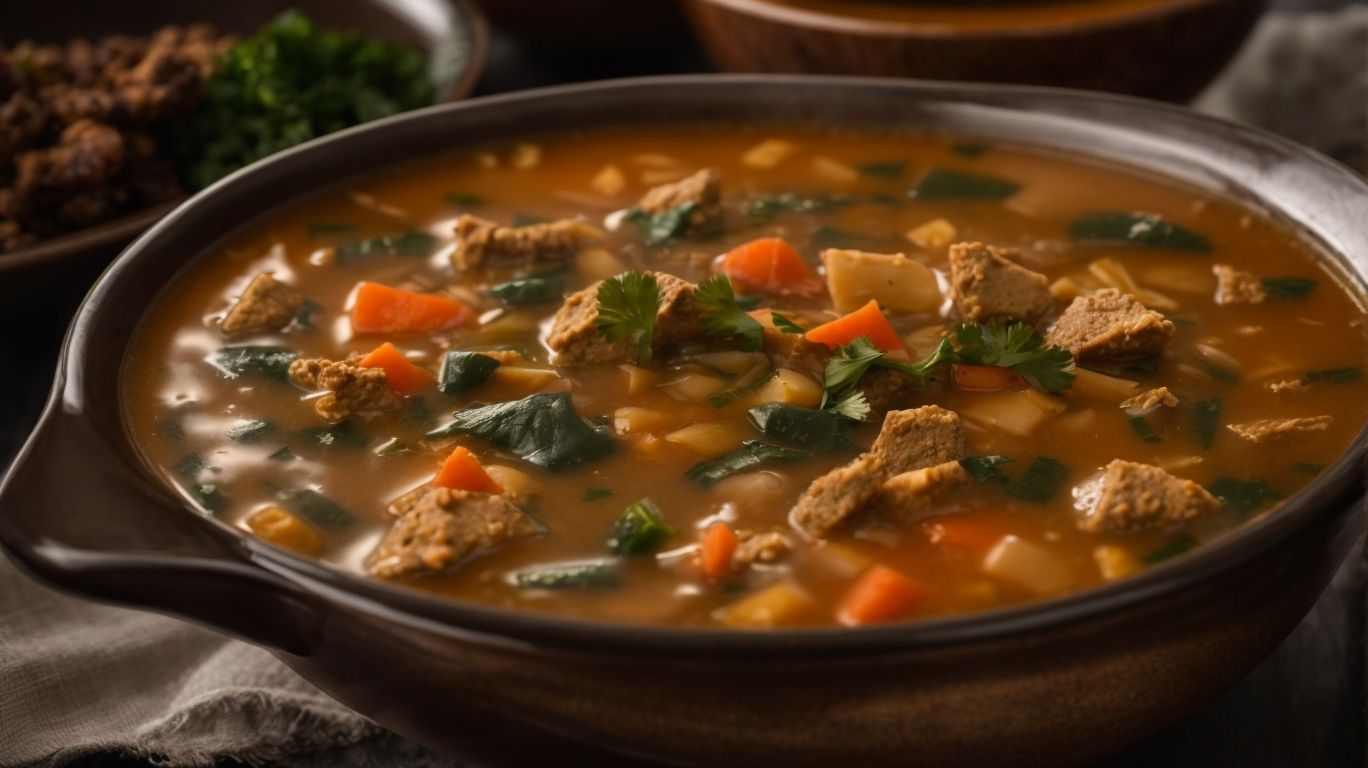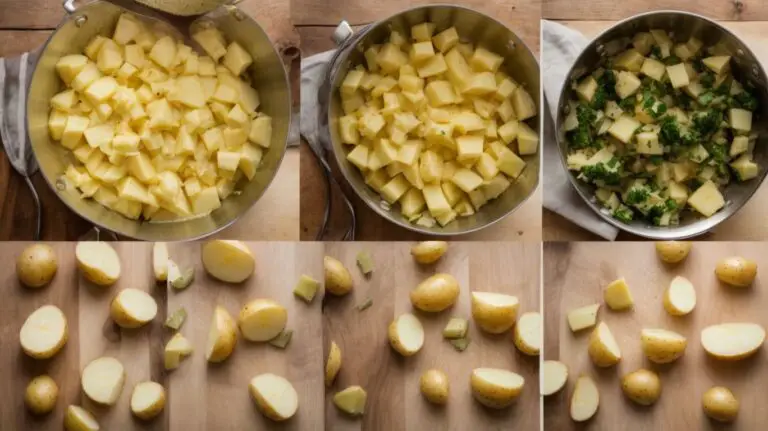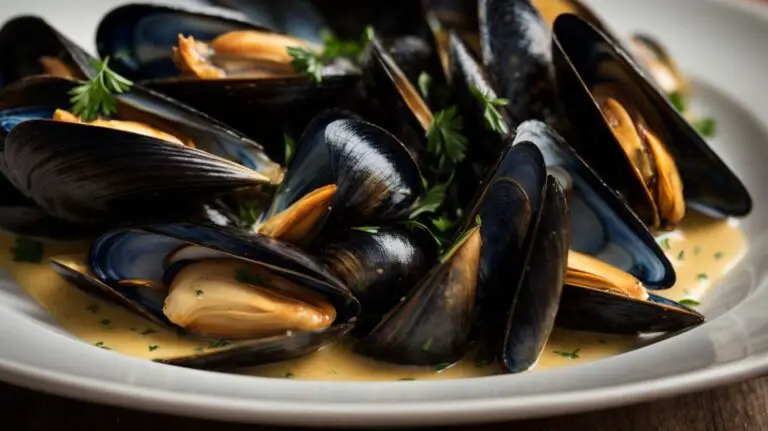How to Cook Ogbono Soup Without Frying?
Are you looking to learn how to cook Ogbono soup without frying?
We will explore this traditional Nigerian dish, from what Ogbono is to the health benefits of not frying it.
We will provide a step-by-step guide on how to prepare this delicious soup without the need for frying. Find valuable tips for ensuring your Ogbono soup turns out just right. Let’s get cooking!
Key Takeaways:
About Ogbono Soup
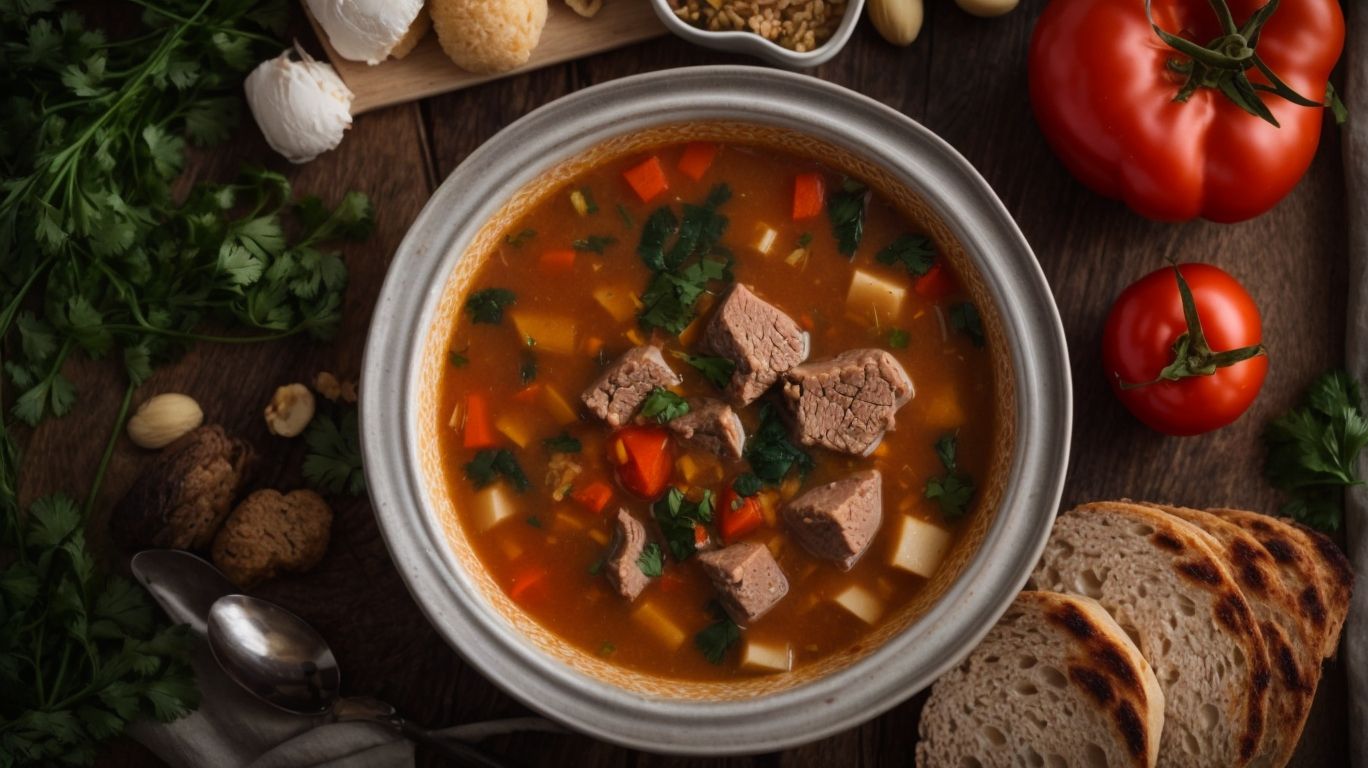
Credits: Poormet.Com – Jesse Thompson
Ogbono soup, a popular Nigerian dish, holds a special place in the hearts of food enthusiasts.
This classic soup has its roots in the Igbo culture of Nigeria, known for its rich culinary heritage and flavorful dishes. Ogbono soup is traditionally made with ground ogbono seeds, palm oil, various meats, and vegetables like spinach or bitter leaf. The dish is cherished for its thick consistency and unique taste, often described as earthy and nutty.
The preparation of Ogbono soup is an art form that has been passed down through generations, recipes evolving over time to suit modern palates. In recent years, the Nigerian Lazy Chef phenomenon has popularized easy-to-follow Ogbono soup recipes that appeal to busy individuals and ajebutters (Nigerian slang for ‘spoiled kids’).
What is Ogbono?
Ogbono, also known as Irvingia gabonensis, is a tropical fruit grown in West Africa, popularly used in Nigerian cuisine.
Ogbono is characterized by its smooth, slightly mucilaginous texture and nutty flavor. When used in cooking, it acts as a natural thickener, giving dishes a hearty consistency. Nigerian lazy chefs often prefer using ogbono in soups for its simplicity and rich taste profile. The traditional ogbono soup recipe typically includes ingredients like stockfish, meat, crayfish, and assorted vegetables. The slow simmering process allows the flavors to meld together, creating a delicious and comforting dish.
What Are the Ingredients of Ogbono Soup?
To prepare a flavorful Ogbono soup, essential ingredients such as palm oil, stock fish, and crayfish powder are combined with the unique taste of Ogbono seeds.
These ingredients play a crucial role in shaping the rich and comforting flavors of this traditional Nigerian dish. The palm oil adds a luscious mouthfeel and a subtle nuttiness to the soup, enhancing its overall richness. Meanwhile, the stock fish contributes a deep umami flavor and a satisfying texture, marrying well with the earthy notes of the crayfish powder.
Regarding the star ingredient, Ogbono seeds, they not only act as a thickening agent but also impart a distinct nutty taste that is both soothing and aromatic. Together, these elements create a harmonious blend of flavors that pairs perfectly with a side of fufu or Santana, providing a wholesome and gluten-free meal that is loved by many.
Why Cook Ogbono Soup Without Frying?
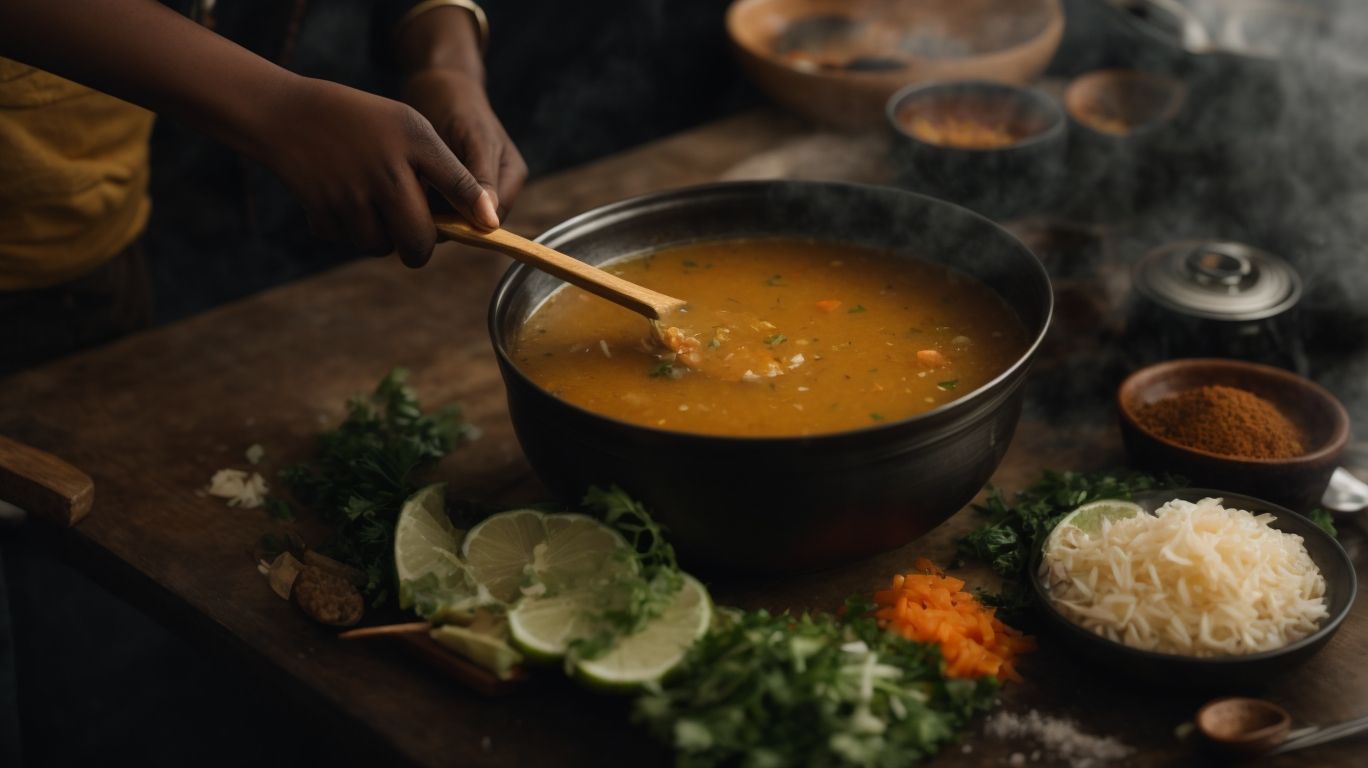
Credits: Poormet.Com – Keith Nelson
Choosing to cook Ogbono soup without frying offers a healthier alternative that caters to individuals with dietary restrictions and preferences.
By preparing oil-Free Ogbono soup, you retain more of the nutrients present in the ingredients, ensuring that the dish is not only delicious but also packed with essential vitamins and minerals. Skipping the frying process helps in preserving the natural flavors of the components, resulting in a richer and more authentic taste experience. This method is particularly beneficial for those with allergies to certain oils or who are looking to reduce their overall oil intake while still enjoying a traditional Nigerian delicacy.
Health Benefits of Not Frying Ogbono Soup
Not frying Ogbono soup retains more nutrients, reduces excessive oil consumption, and caters to individuals with gluten allergies or dietary restrictions.
By preparing Ogbono soup without frying, you not only preserve the inherent nutrients in the ingredients but also minimize the intake of unnecessary fats and calories. This cooking method is especially beneficial for those following a gluten-free diet, as it eliminates the need for flour or other gluten-containing thickeners.
Avoiding frying reduces the risk of potential allergen exposure for individuals with nut allergies, as Ogbono soup traditionally includes ground Ogbono seeds, which may pose a risk when fried in nut oils.
How Does Not Frying Affect the Taste of Ogbono Soup?
Cooking Ogbono soup without frying may result in a smoother consistency with fewer lumps, offering a different texture and taste profile compared to traditional methods.
When Ogbono seeds are not fried before cooking, their natural flavors come through more prominently, resulting in a richer and earthier taste that is distinct from the nuttier notes achieved through the frying process. The absence of frying also affects the soup’s thickness, as the mucilaginous nature of the seeds thickens the soup naturally, creating a luxurious, velvety texture without the need for additional thickeners.
How To Cook Ogbono Soup Without Frying?
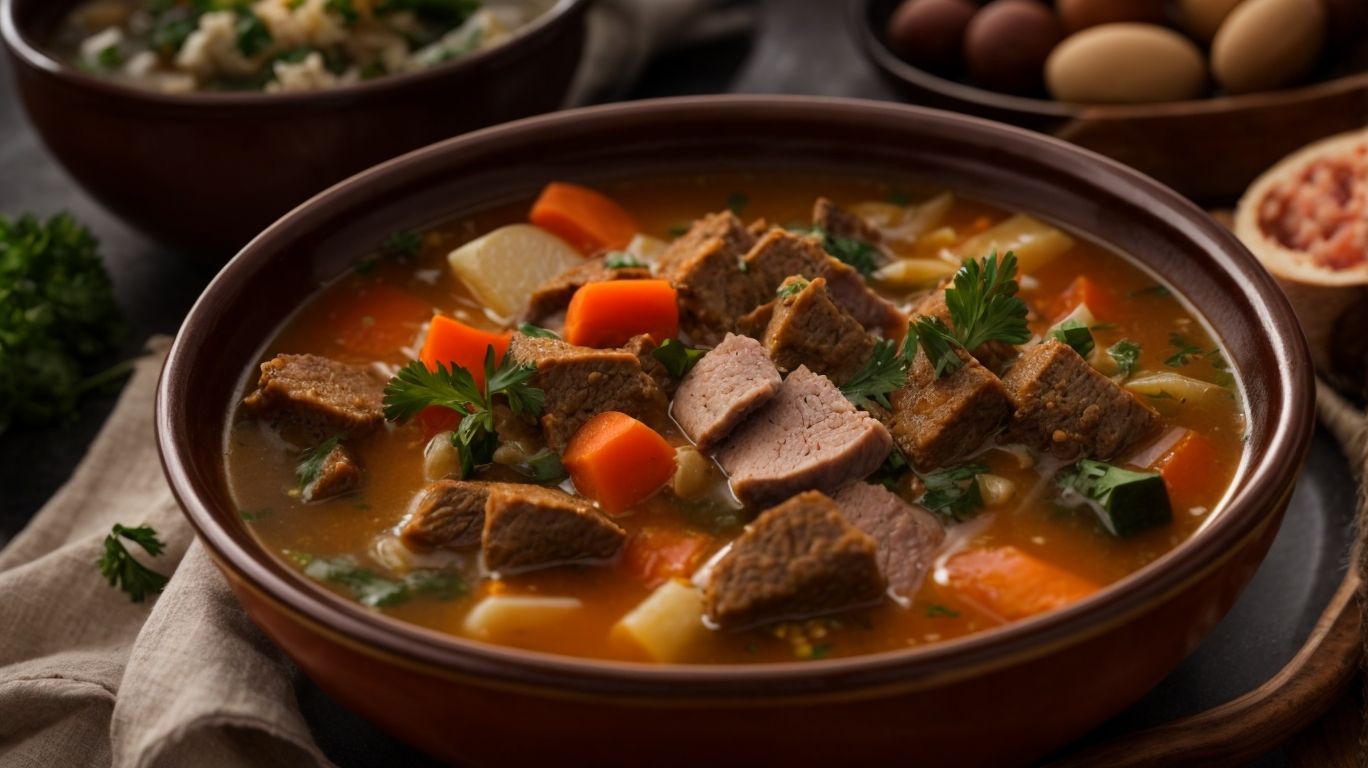
Credits: Poormet.Com – Jordan Young
Preparing Ogbono soup without frying involves a unique cooking method that includes toasting Ogbono seeds, blending them, and using a whisk to achieve the desired consistency.
After blending the toasted Ogbono seeds, the next step involves heating a pot on the stove and adding palm oil to it. Once the palm oil is hot, you can gently pour in the blended Ogbono mixture while stirring continuously with the whisk to prevent lumps from forming. Adding in the ponmo pieces and maggi cubes enhances the flavor of the soup.
Step 1: Prepare the Ingredients
Gather the necessary ingredients for Ogbono soup, including stock fish, crayfish powder, and habanero pepper, and prepare them in a cooking pot.
To begin, ensure that your stock fish has been properly cleaned and cut into manageable pieces. Next, measure out the required amount of crayfish powder, taking care to use freshly ground powder for the best flavor. Remember to wash and dice the habanero pepper, adjusting the amount based on your preferred level of spiciness. Place your cooking pot on the stove, heat it up, and add a generous amount of palm oil to cook the ingredients. Stir well to combine the flavors and allow them to infuse. Slowly pour in the Ogbono seeds, stirring continuously to prevent lumps from forming. This step is crucial for achieving the desired smooth and thick consistency of the soup. Add in your prepped stock fish, crayfish powder, and habanero pepper, simmering the mixture until the Ogbono seeds have completely dissolved and the flavors have melded together.
Step 2: Toast the Ogbono Seeds
Toast the Ogbono seeds in a dry pan to enhance their flavor and aroma, ensuring a delicious nutty taste without the need for frying.
This process of toasting the Ogbono seeds is a crucial step in preparing the Ogbono soup, as it helps to deepen the nutty undertones and brings out a rich, earthy flavor that is characteristic of this traditional Nigerian dish.
By dry-toasting the seeds, you are intensifying their natural oils and allowing them to release their unique fragrance, which will infuse the soup with a distinct aroma that is truly appetizing.
This method avoids the use of excess oil or frying, making the soup healthier while retaining the purity of the Ogbono seeds’ essence.
Step 3: Blend the Ogbono Seeds
Blend the toasted Ogbono seeds to a smooth paste, ensuring a creamy texture that complements the addition of okra and palm oil in the soup.
By properly blending the Ogbono seeds, you can create a velvety base that thickens the soup, enhancing its overall richness and flavor. The process of blending the seeds helps release their natural oils and nutty aroma, which infuse into the dish, providing a delightful earthy undertone. This step ensures that the soup attains a luscious consistency, perfect for enveloping the tender okra slices and absorbing the savory essence of palm oil.
Step 4: Cook the Soup
Cook the blended Ogbono seeds along with uziza leaves, stock fish, and dry fish to infuse the flavors and create a rich, aromatic base for the soup.
After the initial step of cooking the blended Ogbono seeds, the next crucial step involves adding the uziza leaves known for their unique peppery taste, which adds a delightful twist to the traditional flavor profile of the soup. The stock fish contributes a depth of umami flavor, while the dry fish imparts a rich seafood essence that elevates the overall taste experience.
Simmer the mixture gently, allowing the ingredients to meld together harmoniously, gradually releasing their distinct aromas and flavors into the broth. This slow cooking method ensures that each component contributes to the overall deliciousness of the Ogbono soup.
Step 5: Add the Rest of the Ingredients
Add ground pepper, habanero pepper, and other seasonings to the soup, adjusting the flavor profile to suit personal preferences and spice tolerance.
Regarding enhancing the taste of an Ogbono soup, the use of spices such as cloves, nutmeg, and thyme can add depth and complexity to the dish. Incorporating a bit of curry powder can introduce a subtle yet intriguing flavor dimension.
For those who enjoy a touch of heat, a pinch of cayenne pepper or a few slices of fresh jalapeños can bring a fiery kick to the soup. Don’t shy away from experimenting with different seasonings like bay leaves or even a hint of cinnamon for a unique twist.
Step 6: Simmer and Serve
Simmer the Ogbono soup until it reaches the desired thickness and consistency, then serve hot with your choice of swallow for a fulfilling and delicious meal.
Simmering the soup not only blends the flavors seamlessly but also allows the ingredients to marry together harmoniously. Once the soup has simmered to perfection, it is time to dish it up piping hot into bowls.
For those looking for a visual guide, numerous cooking channels on YouTube offer step-by-step tutorials on crafting the perfect Ogbono soup. Watching a video recipe can be helpful for beginners or those seeking new variations.
When serving, consider pairing this hearty soup with traditional swallows like pounded yam, eba, or fufu for a complete and authentic African dining experience.
Tips for Cooking Ogbono Soup Without Frying
{
To master the art of cooking Ogbono soup without frying, consider using high-quality palm oil for an authentic flavor without compromising on health benefits.
“expanded_content”
When making oil-free Ogbono soup, opt for a variety of vegetables like okra, ugwu, and bitter leaf to enhance the taste and nutritional value. Cooking method plays a vital role in this dish; simmer the ingredients slowly to allow the flavors to meld together. Add stock or water gradually to achieve the desired consistency, and don’t forget to stir frequently to prevent sticking. Adjust the seasoning with salt, crayfish, and maggi cubes to suit your preferences before serving the delicious and healthy Ogbono soup to your family and friends.
”
}{
To master the art of cooking Ogbono soup without frying, consider using high-quality palm oil for an authentic flavor without compromising on health benefits.”
“expanded_content”
When making oil-free Ogbono soup, opt for a variety of vegetables like okra, ugwu, and bitter leaf to enhance the taste and nutritional value. Cooking method plays a vital role in this dish; simmer the ingredients slowly to allow the flavors to meld together. Add stock or water gradually to achieve the desired consistency, and don’t forget to stir frequently to prevent sticking. Adjust the seasoning with salt, crayfish, and maggi cubes to suit your preferences before serving the delicious and healthy Ogbono soup to your family and friends.
”
}
How to Ensure the Soup is Not Too Thick or Too Thin?
Achieving the perfect consistency in Ogbono soup involves careful monitoring during the cooking process to prevent lumps and adjust thickness according to personal preference.
One common issue that arises when preparing Ogbono soup is dealing with lumps that can affect the overall texture of the dish. To avoid this, it is essential to continuously stir the soup while incorporating the ground Ogbono seeds gradually into the hot liquid, ensuring a smooth integration.
- Solutions to combat lumps include using a whisk or blender to mix the ingredients smoothly, breaking down any clumps that may form.
Those with allergies should be mindful of the ingredients they use to cater to their dietary restrictions.
What Other Ingredients Can Be Added to Enhance the Flavor?
Exploring ingredient variations such as uziza leaves, ponmo pieces, or additional spices can elevate the flavor profile of Ogbono soup, catering to diverse taste preferences.
Uziza leaves, with their unique peppery flavor, add a delightful twist to the traditional Ogbono soup, giving it a subtle heat that complements the rich soup base.
For those seeking a textural contrast, incorporating tender ponmo pieces can bring a chewy element to the dish, enhancing the overall eating experience.
Experimenting with spices like cayenne pepper or nutmeg can introduce depth and warmth to the soup, creating a harmonious blend of flavors that awaken the palate.
Conclusion
In conclusion, Ogbono soup presents a delightful culinary journey rooted in Nigerian tradition, offering a flavorful experience that celebrates local ingredients and cultural heritage.
Ogbono soup, often referred to as Ogbolo soup, is a popular Nigerian delicacy known for its rich and hearty taste. This traditional Nigerian lazy chef recipe involves cooking ground Ogbono seeds with palm oil, meat, fish, and assorted vegetables. The soup’s thick consistency is achieved by the mucilaginous nature of the Ogbono seeds when mixed with water. It is commonly enjoyed with fufu or pounded yam, making it a staple in Nigerian households. For many families, Ogbono soup is a go-to dish during special occasions and gatherings, loved by both adults and ajebutters alike.
Frequently Asked Questions
1. How can I cook ogbono soup without frying it?
To cook ogbono soup without frying it, you can use the dry roasting method. Simply heat a dry pan over medium heat and add the ground ogbono seeds. Stir frequently until the seeds are slightly browned and aromatic.
2. Is it possible to make delicious ogbono soup without frying?
Yes, it is absolutely possible to make delicious ogbono soup without frying. Using the dry roasting method or incorporating other cooking techniques, such as boiling or steaming, can result in a flavorful and healthy ogbono soup.
3. What is the benefit of not frying ogbono soup?
Not frying ogbono soup can provide health benefits by reducing the amount of oil and fat in the dish. It can also result in a lighter and more nutritious soup that still maintains its rich flavor.
4. Can I use a substitute for frying in my ogbono soup recipe?
Yes, you can use a substitute for frying in your ogbono soup recipe. Some alternatives include dry roasting, steaming, or boiling the ogbono seeds before adding them to the soup.
5. Will my ogbono soup still be thick without frying?
Yes, your ogbono soup can still be thick without frying. By adding other ingredients such as okra or pumpkin, or using less liquid, you can achieve a thick and hearty consistency without the need for frying.
6. What other ingredients can I add to my ogbono soup besides frying?
In addition to frying, you can add other ingredients to your ogbono soup to enhance the flavor and texture. Some popular options include meats, seafood, vegetables, and spices like crayfish or red chili peppers. Experiment with different combinations to find your preferred taste.

